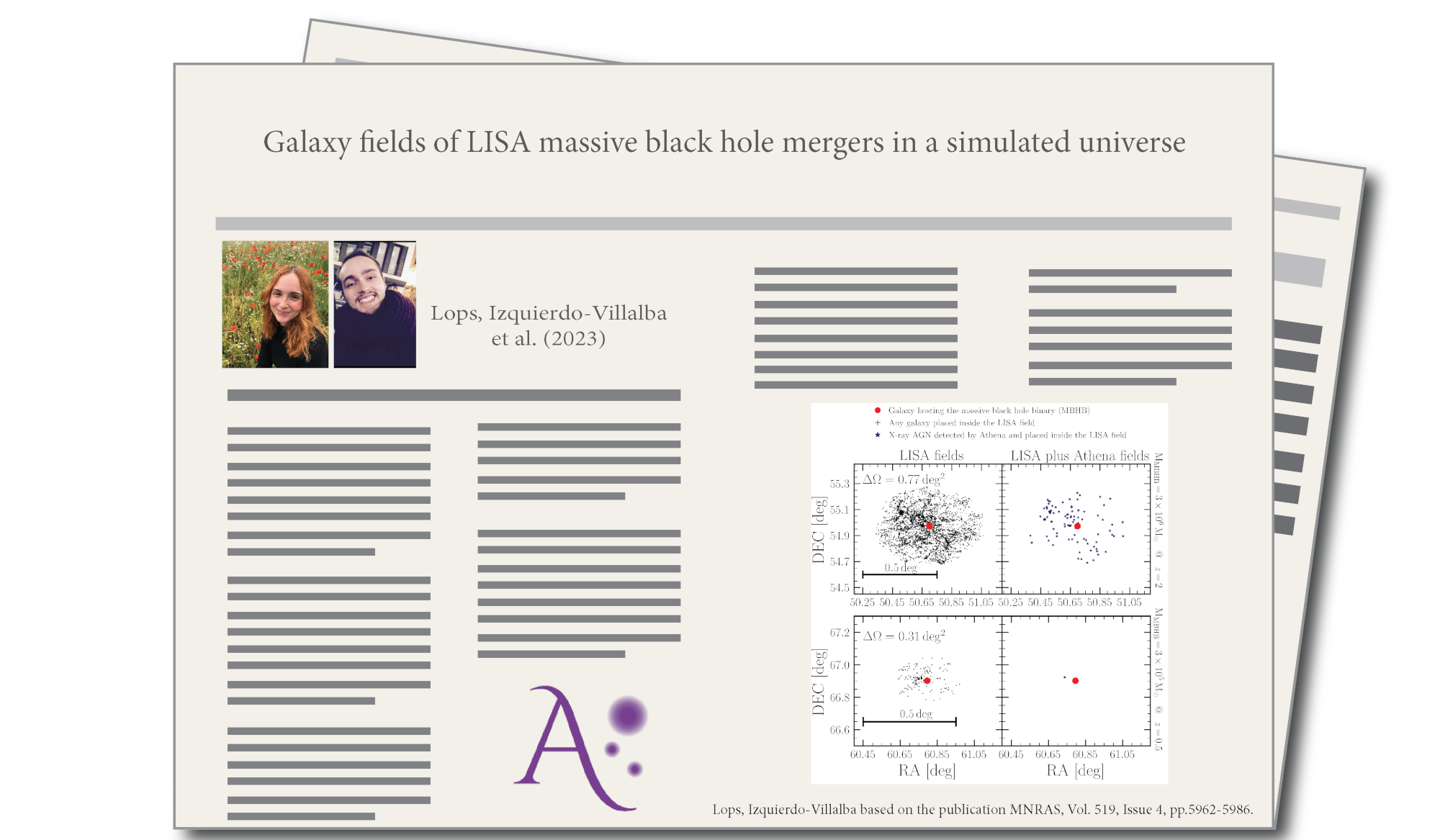
Galaxy fields of LISA massive black hole mergers in a simulated universe

By Gaia Lops & David Izquierdo-Villalba
The Laser Interferometer Space Antenna (LISA) will search for gravitational waves (GWs) at 0.1 − 100 mHz where loud signals from inspiralling and coalescing massive black holes binaries (MBHBs) of 104−107 MSun at z<20 are expected. The detection of these MBHBs will open an important avenue for multimessenger studies since the simultaneous detection of MBHBs in the GW and electromagnetic band will constrain the luminosity distance-redshift relation. While the GW signal gives the source luminosity distance, the location of the electromagnetic emission associated with the MBHB provides the redshift information. However, this latter search is completely dependent on the sky-localization capabilities of LISA, which can pin down regions varying from hundreds to fractions of deg2 and, thus, on the number of galaxies lying within these regions.

